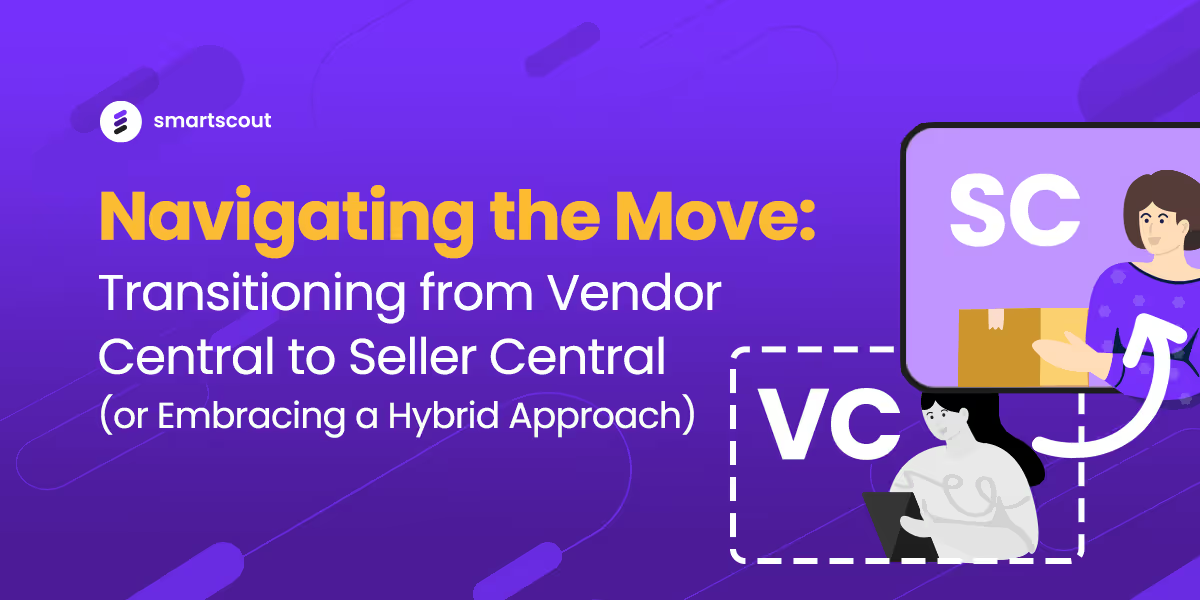As an Amazon seller, you can choose between Vendor Central and Seller Central to manage your business. While both platforms offer unique advantages, many businesses find that transitioning from Vendor Central to Seller Central or adopting a hybrid approach provides greater control and flexibility.
We'll discuss the key differences between the two, how to transition, and the benefits of considering a hybrid approach that utilizes both platforms. Additionally, we'll touch on the potential issue of violating agreements and how some vendors discreetly navigate this situation.
Understanding Vendor Central and Seller Central
Before making the transition, it's essential to understand the key differences between Vendor Central and Seller Central.
Vendor Central:
- You sell your products directly to Amazon in bulk.
- Amazon takes responsibility for listing, pricing, and shipping your products.
- You receive payment from Amazon based on negotiated wholesale prices.
- Limited control over product listings and prices.
Seller Central:
- You sell your products directly to customers on the Amazon Marketplace.
- You have control over product listings, pricing, and fulfillment (Fulfillment by Amazon or self-fulfillment).
- You receive customer payment, minus Amazon's referral fees and any other applicable fees.
- More control and flexibility in managing your business on Amazon.
Preparing for the Transition
Before transitioning from Vendor Central to Seller Central, consider the following steps:
- Assess your current business: Evaluate your current sales performance, inventory levels, and customer feedback to determine if the transition is right for your business.
- Create a Seller Central account: To get started, sign up for a Seller Central account. You must provide your business information, tax identification number, and bank account details.
- Plan your inventory strategy: Decide whether you want to use Fulfillment by Amazon (FBA) or handle your fulfillment. Consider factors such as storage costs, shipping fees, and delivery times.
- Optimize your product listings: Create high-quality product listings with accurate descriptions, images, and keywords to increase visibility and sales on the Seller Central platform.
Making the Transition
Once you've prepared for the transition, follow these steps to move your products from Vendor Central to Seller Central:
- End your vendor relationship: Notify Amazon of your decision to terminate your Vendor Central agreement, being mindful of any terms and conditions that may apply.
- Transfer product listings: Migrate your product listings from Vendor Central to Seller Central. This may require creating new listings or updating existing ones.
- Update inventory levels: Adjust your inventory levels in Seller Central to reflect your current stock.
- Monitor your sales performance: Keep a close eye on your sales metrics and customer feedback to ensure a smooth transition and identify areas for improvement.
Navigating Potential Agreement Violations
It's important to note that some vendor managers may inform brands that selling directly on Seller Central violates their Vendor Central agreement. In such cases, some vendors discreetly launch products on Seller Central without notifying their vendor manager. While this approach can help circumvent potential conflicts, reviewing your agreement and understanding any potential risks involved is essential.
Considering a Hybrid Approach
Many vendors find that a hybrid approach, utilizing both Vendor Central and Seller Central, can be the best solution for their businesses. This allows you to leverage the benefits of both platforms, such as:
- Selling high-volume products through Vendor Central to take advantage of Amazon's marketing and fulfillment capabilities.
- Using Seller Central for niche or specialty products that require more control over pricing and inventory management.
- Experiment with new products on Seller Central before transitioning them to Vendor Central for larger-scale distribution.
Conclusion
Transitioning from Vendor Central to Seller Central can offer increased control and flexibility for your business on Amazon.
However, it's essential to evaluate your current performance, plan your inventory strategy, and optimize your product listings before moving. Be aware of potential agreement violations and consider the risks of discreetly launching products on Seller Central without notifying your vendor manager.
For some businesses, a hybrid approach that combines the strengths of both platforms may be the most effective way to maximize sales and profitability, allowing you to leverage the advantages of each system strategically.










